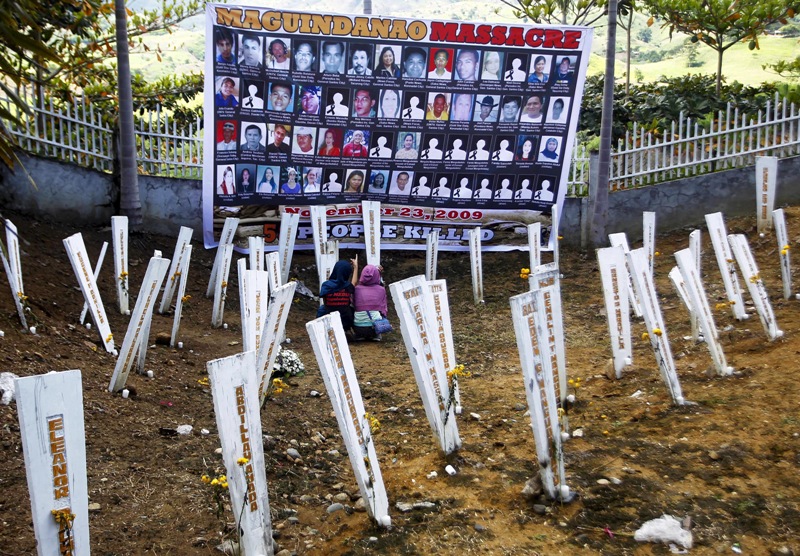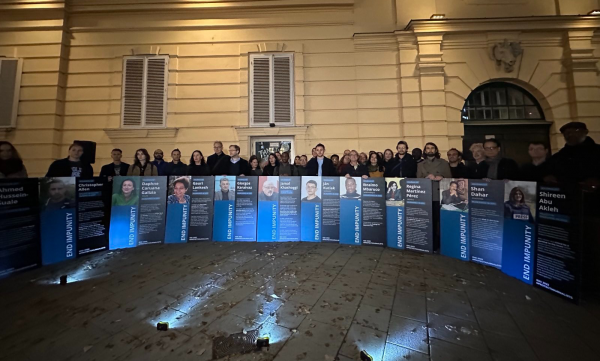The year 2015 was one of the deadliest on record for journalists around the world, the International Press Institute (IPI) said today, with 108* journalists believed to have died as a direct result of their job and 36 more killed under circumstances that remain murky.
IPI added 108 names from 2015 to its Death Watch, which since 1997 has tallied journalists deliberately targeted because of their profession – either because of their reporting or simply because they were journalists – and those who lost their lives while on assignment.
In 36 other cases, IPI continues to investigate whether journalists who met with violent ends were targeted for their reporting. That number reflects a failure by too many governments to fully investigate journalists’ deaths, allowing cases to wither and be forgotten, and giving murderers free rein to kill again.
“While this year’s number slightly higher than last year’s count of 100 journalists killed, the final tally once more facts are known could very well equal or exceed 2012’s tragic record of 133 deaths,” IPI Director of Advocacy and Communications Steven M. Ellis said. “Until all governments become serious about ending this cycle of violence, killers will continue to slaughter journalists with impunity and an already staggering toll will continue to grow.”
Far and away, the leading scourge of journalists in 2015 was violent extremist Islamic groups, with some 40 journalists believed to have been killed by Islamic militants. Twenty-four of those journalists – nearly one in every four names that IPI added to this year’s Death Watch – were murdered by militants associated with or inspired by the Islamic State group and its supporters in the Middle East, North Africa and Europe.
That count includes the executions of 16 journalists in Iraq and one in Syria, the massacre of five journalists found dead in Libya in April and the killings of two Syrian journalists in Turkey in October.
Two other journalists who died this month – Ahmad Mohamed al-Mousa in Syria and Naji Jerf in Turkey – are also believed to have been killed by the Islamic State group, but it has yet to claim responsibility, as it has for other murders in Turkey.
At least four journalists declared missing and believed held in Syria in 2015 remain unaccounted for: Japanese journalist Junpei Yasuda and Spanish journalists Angel Sastre, Antonio Pampliega and Jose Manuel Lopez. Further, two fate of two Tunisian journalists detained in 2014 in Libya – Sofiene Chourabi and Nadhir Ktari – remains unknown. Islamic State group militants claimed in January to have executed the pair, but a Tunisian official said in September that he had proof they remained alive.
This year’s number of deaths attributable to violent Islamic extremists was further buoyed by the massacre of eight journalists at the Paris offices of magazine Charlie Hebdo in January and the hacking deaths of four bloggers in Bangladesh by militants associated with or inspired by Al Qaeda, as well as by the killings of one journalist each in Pakistan and Somalia, respectively, by the Taliban and Al Shabab.
Another 61 journalists around the world were targeted for murder – possibly more, if two journalists in Iraq and Ukraine who died in suspicious circumstances are included. However, IPI was able to link only 29 of those killings to journalists’ work. That leaves another 32 cases, predominantly in Latin America and Southeast Asia, shrouded in mystery.
The most problematic country in terms of lack of information was Honduras, where at least eight journalists were murdered: shot, stabbed or beaten to death. But almost no hard facts about suspects or motives in the crimes are available.
Mexico – the second deadliest country overall after Iraq and a place where the plight of journalists is often compared to those working in an active warzone – saw at least 11 journalists killed, but unclear circumstances precluded a firm link to the victims’ work in all but two cases. Inconclusive investigations dragged on in cases such as those of photojournalist Rubén Espinosa, tortured and killed in Mexico City after fleeing threats in Veracruz; Filadelfo Sánchez Sarmiento, gunned down in Oaxaca; Jose Joaquin Perez Morales and Aurelio Hernandez Herrera, found dead and apparently poisoned in a Tabasco hotel; and many others.
In Brazil, seven of nine murders could be tied to journalists’ work. However, only five out of nine murders in India and two out of five murders in the Philippines could be tied to the victim’s work. Journalists were burned and beaten to death in the former, while the latter saw reporters gunned down by motorcycle-bound attackers, a scenario repeated so often in many countries that it almost becomes routine.
And in all of those countries, even in cases where murders were conclusively linked to journalists’ work, it remained a rarity for an accused to be brought to justice.
“When authorities fail to follow every lead, when they downplay crimes to hide a level of violence or, worse, to shield killers from justice, the situation festers and murderers know there is nothing to stop them,” Ellis said. “Journalists lose their ability to report freely, the public loses its ability to know what’s happening and democracy ultimately cannot function.”
Beyond murders, death amid combat remained a leading source of journalists’ lives lost, as 29 of those appearing on IPI’s Death Watch were killed amid violent conflict in Syria (14), Yemen (6),South Sudan (5), Iraq (2), Somalia (1) and Ukraine (1).
Sadly, the aftereffects of previous abuse again claimed the life of a journalist in 2015, this time photojournalist Sitiveni Moce of Fiji, who was severely beaten covering coups in 2000 and 2006.
Moreover, 11 reporters lost their lives in other tragic circumstances while on assignment. Those deaths came in traffic collisions in Armenia, Ghana, India, Turkey and Zambia, and aboard Germanwings flight 9525, which crashed in France carrying two Iranian journalists. They also came as a Romanian reporter was killed in a horrific nightclub fire, a Serbian journalist was caught in a boat propeller in France and a Sri Lankan journalist was crushed by a rampaging elephant.
To download a pdf table showing the full list of names of 108 journalists appearing on IPI’s Death Watch for 2015, as well as the 36 others whose cases IPI continues to monitor, click here.
*IPI significantly revised this statement and many of the specific numbers included in it on Feb. 8, 2016 to reflect its addition of 10 more names to IPI’s 2015 Death Watch following initial publication. That number represents journalists killed in Syria (9) and Brazil (1).
IPI also revised the article to remove the attribution of responsibility for the January 2015 attack on the Paris offices of Charlie Hebdo to “supporters” of the Islamic State group. An associate of the two men responsible for the shootings who conducted a related attack on a Jewish supermarket had pledged loyalty to the group. However, no link between the Charlie Hebdo attackers and the group has been conclusively established or ruled out. Moreover, the rival terrorist group Al Qaeda in the Arabian Peninsula claimed responsibility for the Charlie Hebdo shootings.



